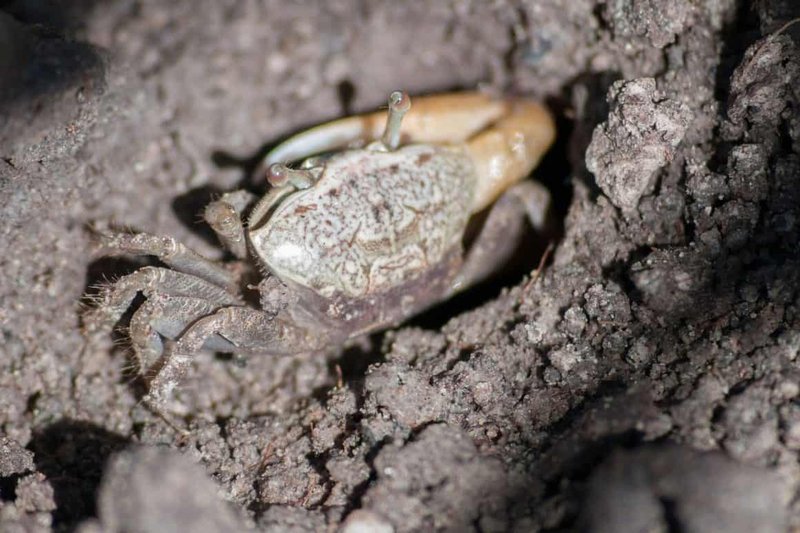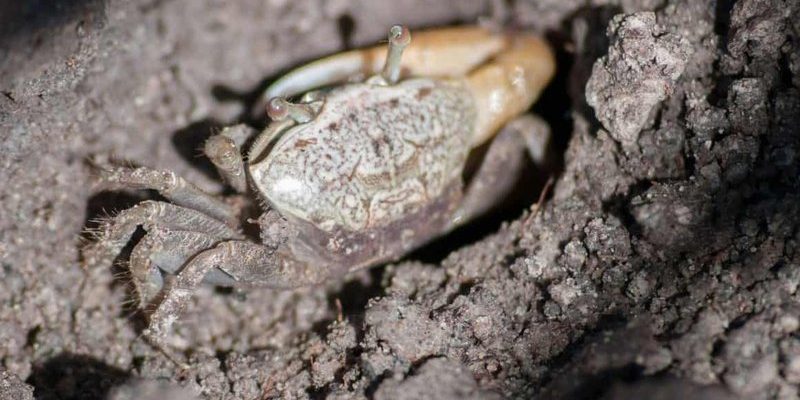
Burrowing predators can wreak havoc on your fish, plants, and overall tank health. It’s like finding out that the cute little creature you brought home is secretly a troublemaker. In this article, we’ll dive deeper into identifying those signs that your tank might be harboring a burrowing predator, and how to handle the situation if you find one.
What Are Burrowing Predators?
Understanding what a burrowing predator is can help you spot one before it causes chaos in your tank. In the aquarium world, burrowing predators are typically fish or invertebrates that dig into the substrate to hide, hunt, or even lay eggs. They can create a lot of movement in the substrate, which can disturb the environment of other inhabitants.
A few examples of these sneaky critters include certain species of catfish, eels, and even some types of crabs. While they may seem harmless at first, their digging and scavenging habits can upset the delicate balance of your aquatic ecosystem.
Here’s the thing: if you notice unusual behavior or changes in your tank, it might be time to investigate further. Let’s explore some signs that will help you identify if a burrowing predator is causing a ruckus!
Sign 1: Uneven Substrate
One of the most telltale signs of a burrowing predator is an uneven or disturbed substrate. If you’ve noticed that your tank’s gravel or sand looks like it’s been to a mini earthquake convention, that’s a red flag. These predators often dig tunnels, which can lead to noticeable changes in the surface of the substrate.
You might also see piles of substrate pushed up in certain areas, which could indicate that something is digging around. This might often be accompanied by a lack of plants or decor in those areas, which could have been uprooted or moved around during their digging.
If you find that your tank floor resembles a construction site, take a closer look to see if anything seems amiss. Honest observation can save you a lot of headaches down the line!
Sign 2: Missing or Damaged Plants
Plants are a critical part of any aquarium, providing shelter and a natural environment for your fish. So, if you’ve noticed your plants disappearing or suffering from sudden damage, you might have a burrowing predator on your hands.
These predators often uproot plants as they dig, leading to a pretty barren landscape. If your anubias or java fern is becoming a victim of the “plant munching,” check for any signs of digging or tunneling activity nearby.
It’s important to differentiate between natural fish behavior and burrowing predator antics. If your fish are nibbling on plants, that’s expected, but if they’re being uprooted altogether, it might be time to investigate deeper.
Sign 3: Unusual Aggression from Other Tank Mates
This one can be a bit tricky, but aggression among tank mates can indicate that there’s a predator lurking. When a burrowing predator digs around, it can stress other fish, leading to aggressive behavior as they compete for space and resources.
You might notice fish becoming territorial, fighting more often, or hiding more than usual. If you observe these changes, it could be due to the presence of a burrowing creature that’s disrupting the harmony of the tank.
In such cases, try to watch how your fish interact before and after you spot the signs of a burrowing predator. Keeping a close eye on their behavior can help you assess the situation better.
Sign 4: Increased Waste and Filtration Issues
Another potential sign of a burrowing predator is a sudden spike in waste levels or filtration problems. If you’re noticing more debris or cloudiness in your tank, a digging creature may be stirring things up, increasing waste production.
These predators can disturb the substrate and release waste trapped within it, leading to an overload for your filtration system. You might find yourself fiddling with the filter settings or spending more time cleaning than usual.
If you suspect a burrowing predator, it’s important to monitor your water quality closely. Elevated ammonia or nitrite levels can harm your fish, so regular testing becomes essential.
Sign 5: Odd Behavior in the Predator
Lastly, if you’ve already identified a potential burrowing predator, it’s crucial to watch for any unusual behavior. Sometimes, they’ll become more active or visible during feeding times, or you may see them come out of their hiding places more often than usual.
Burrowing predators can sometimes be shy, so if your critter is acting out of character, it could mean discomfort or a breeding instinct. Keep an eye on its interactions with tank mates and how often it digs or hides.
It’s always good to remember: while some burrowing creatures can be beneficial for your tank, others can be problematic. Knowing the signs will equip you to make the right decisions about your aquatic environment.
What to Do If You Identify a Burrowing Predator
Now that you’re familiar with the signs, what should you do if you suspect a burrowing predator is causing trouble? Here are some steps you can take.
- Investigate: First, closely observe your tank and its inhabitants. Check if the suspected predator is behaving as described and if your other fish are stressed.
- Modify the Environment: Adjust substrate types, plant arrangements, or hiding spots to minimize interaction. Sometimes, a simple change can ease tensions.
- Consider Removal: If the predator is causing significant disturbance, you might need to remove it. Make sure to do this in a way that’s safe for both the predator and the rest of your tank.
Remember, not every burrowing creature is a villain! Some can play beneficial roles. Understand their needs and behaviors, and you might find ways for them to coexist peacefully within your aquatic space.
Final Thoughts
Recognizing the signs of a burrowing predator isn’t just about protecting your fish; it’s about maintaining a healthy aquarium environment. By paying attention to the signs like disturbed substrate, damaged plants, or odd behavior from tank mates, you’ll be well on your way to keeping your tank balanced.
Ultimately, your goal is a thriving aquatic community where each creature can live harmoniously. If you ever doubt what’s going on in your tank, trust your instincts and investigate. The world of aquariums is both rewarding and challenging; with the right knowledge, you can handle whatever swims your way!

